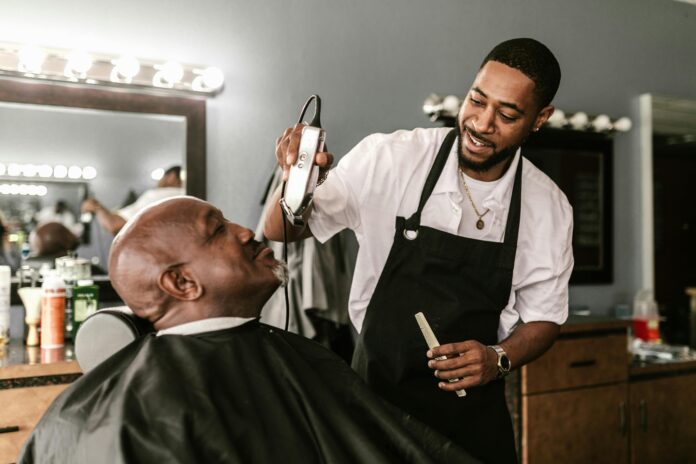Starting a barbershop can be an exciting and profitable venture, especially with the grooming industry’s steady growth. Whether you’re passionate about cutting hair or looking to build a thriving business, this comprehensive guide will walk you through the essential steps of starting your own barbershop.
Estimated Startup Costs: $75,000–150,000
Industry Trend: Growing
Difficulty: Moderate to High
Profitability: $20k–$100k annually
Time to Build: 9 to 18 months
Commitment: Full-time
Quick Links
1. Understanding the Barbershop Industry and Market
The barbershop business is a booming industry worldwide, with increasing demand for grooming services. Here’s what you should know:
- Market Size: The global market for barbershops is expected to reach billions by 2025, with steady growth in developed and emerging economies alike.
- Growth: The grooming industry has been consistently growing at an annual rate of 1.5% in many regions, and job opportunities for barbers are expected to rise significantly in the coming years.
- Trends: Modern barbershops now offer a blend of traditional services and luxury experiences, with many incorporating advanced technologies like augmented reality to preview haircuts and specialized software for client management.
2. Brainstorming a Barbershop Name
Choosing a name for your barbershop is one of the most important branding decisions you’ll make. A good name should be easy to remember, pronounce, and reflect the services you offer. Consider including keywords like “barber” or “hair” to help with search engine optimization (SEO) if you plan to create a website.
3. Choosing the Right Location
Location is crucial for the success of your barbershop. Ideally, you want to open your shop in a high-traffic area with good visibility and easy access. Consider places with dense populations or near businesses that complement your services, such as gyms or clothing stores. Accessibility and parking are also key factors for customer convenience.
4. Writing a Business Plan
A well-written business plan will be your roadmap to success. Your business plan should include:
- Executive Summary: A brief overview of your barbershop and the business goals.
- Company Overview: What your shop is about, its mission, and its goals.
- Market Research: Insights into your target market, including customer preferences and trends.
- Services Offered: The various haircuts, shaves, and other services your barbershop will offer.
- Financial Plan: A projection of costs, profits, and cash flow for the first few years.
5. Creating a Service Menu
Your service menu defines your offerings and pricing. Be clear about the services you provide, from classic haircuts to more advanced grooming techniques. Pricing should reflect the quality of service and the experience provided. You can also consider tiered pricing based on the experience level of the barber.
6. Registering Your Barbershop
When setting up your barbershop, choose an appropriate business structure. The options typically include sole proprietorship, partnership, or limited liability company (LLC). Register your business with local authorities, and obtain any necessary licenses or permits. Be sure to check the requirements in your country or region.
7. Licenses and Permits
The licensing process varies depending on your location, but you will typically need a business license, health and safety certifications, and possibly specific barber-related permits. Ensure you’re in compliance with local regulations before opening your shop.
8. Getting Business Insurance
Protect your business by obtaining the right type of insurance. This includes liability insurance to cover accidents and damage, as well as property insurance to protect your equipment and space.
9. Building a Team
A successful barbershop depends on a skilled and friendly team. Hire experienced barbers who align with your vision for customer service. Providing regular training and maintaining a positive work environment will help you retain staff and keep customers happy.
10. Preparing to Launch Your Business
Before you open your doors, create a buzz! Use social media, local advertising, and word-of-mouth to generate excitement. Consider offering promotions or opening events to attract your first customers.



